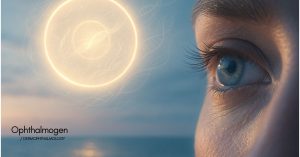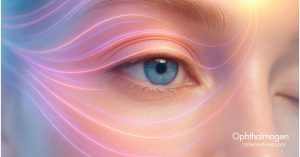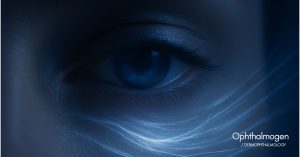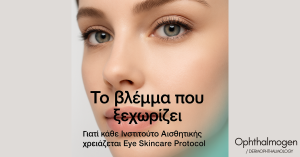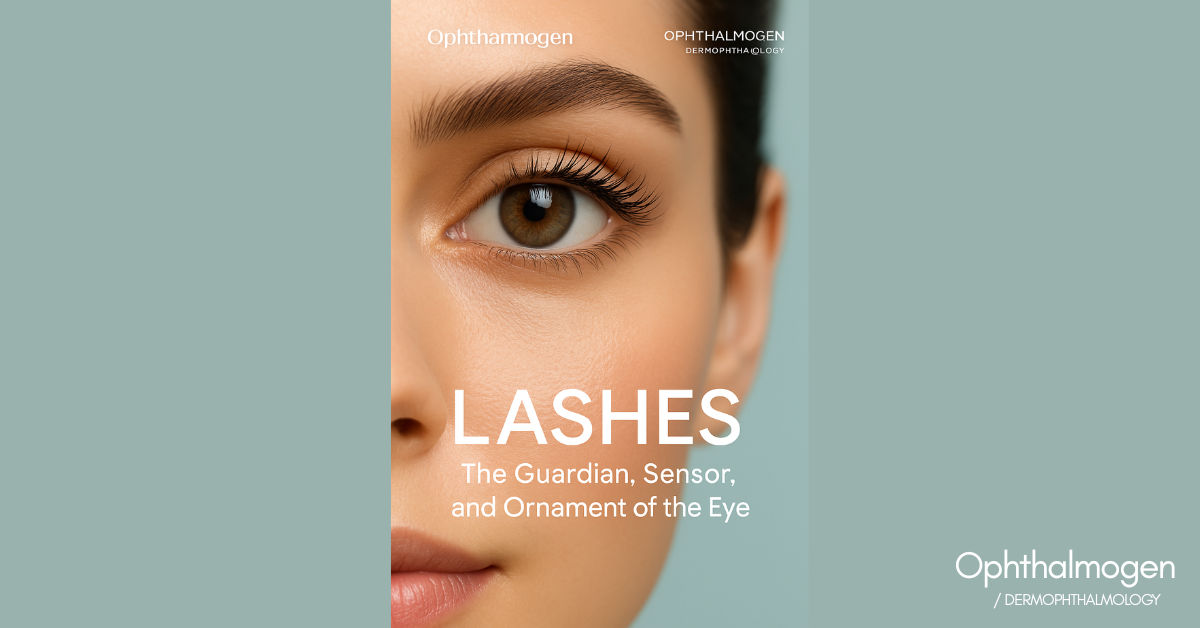
Introduction
Eyelashes are not just decorative hairs framing the eye. They are guardians, sensors, and indicators of health — protecting the ocular surface, regulating tear evaporation, and enhancing the beauty of the gaze. From ancient civilizations to modern Dermophthalmology, their importance remains unchanged: without healthy lashes, there can be neither clear vision nor radiant appearance.
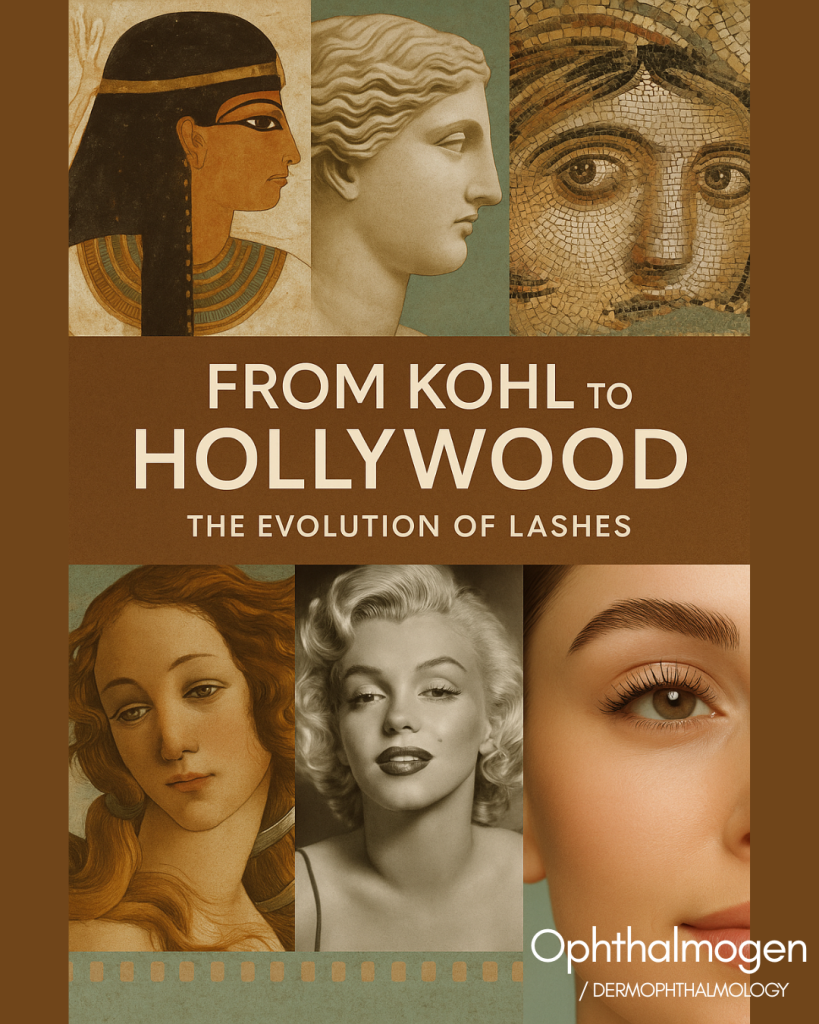
Historical Perspective
- Ancient Egypt (3000 BC): Use of kohl for shading and lash enhancement — offering both beauty and antimicrobial protection.
- Ancient Greece: Hippocrates described madarosis (eyelash loss) as a sign of systemic imbalance.
- Roman Era: Pliny the Elder wrote that excessive sexual activity caused lash loss — thus long lashes symbolized purity and virtue.
- Middle Ages – Renaissance: In some periods, women removed brows and lashes for aesthetic reasons; later, the Renaissance revived thick lashes as a mark of youth and vitality.
- 19th Century: French innovator Eugène Rimmel created the first modern mascara — his name became synonymous with the product.
- 20th Century: Hollywood icons like Marilyn Monroe, Audrey Hepburn, and Twiggy turned eyelashes into a universal emblem of femininity.
- 21st Century: Lash lifts, extensions, lamination — while enhancing beauty, they have also increased cases of blepharitis and dry eye.
Eyelash Physiology
- Number: ~90–160 lashes on the upper lid, ~70–80 on the lower.
- Length: 8–12 mm, with a life cycle of 3–5 months (anagen, catagen, telogen).
- Nerve Endings: Function as “danger sensors,” triggering the blink reflex.
- Amador et al. (2015): The ideal lash length is one-third of the eye’s width — minimizing evaporation and particle entry.
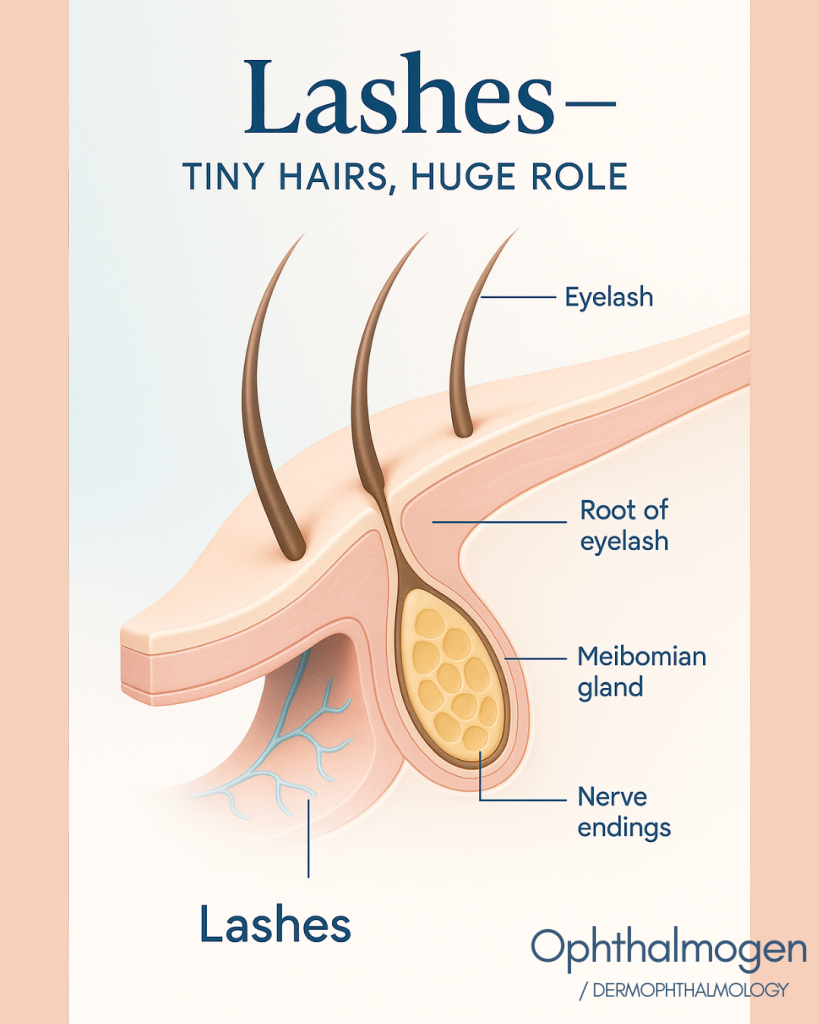
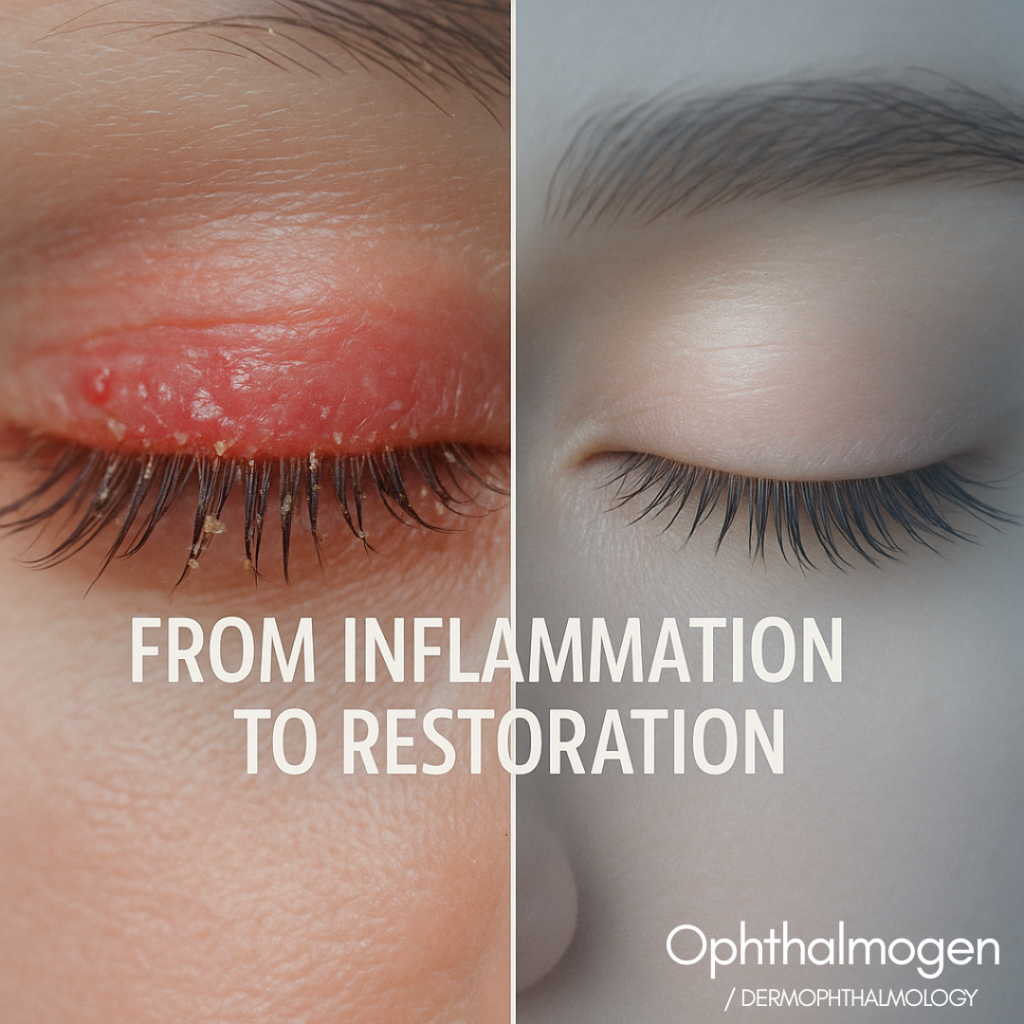
Pathophysiology – Why Dark Circles Form
- Madarosis (lash loss): May result from dermatologic (psoriasis, seborrheic dermatitis), autoimmune (alopecia), or pharmacologic causes (chemotherapy, isotretinoin).
- Trichiasis: Inward-growing lashes that scratch the cornea.
- Demodex folliculorum: Mite living in lash follicles, often overgrows in women with heavy eye makeup → blepharitis & dry eye.
- Blepharitis: inflammation originating at the lash base → redness, itching, and swelling.
Relation to Vision & Comfort
- Lashes reduce airflow and prevent tear-film evaporation.
- Their absence leads to redness, dryness, and corneal vulnerability.
- For contact lens users, poor lash hygiene greatly increases irritation and infection risk.
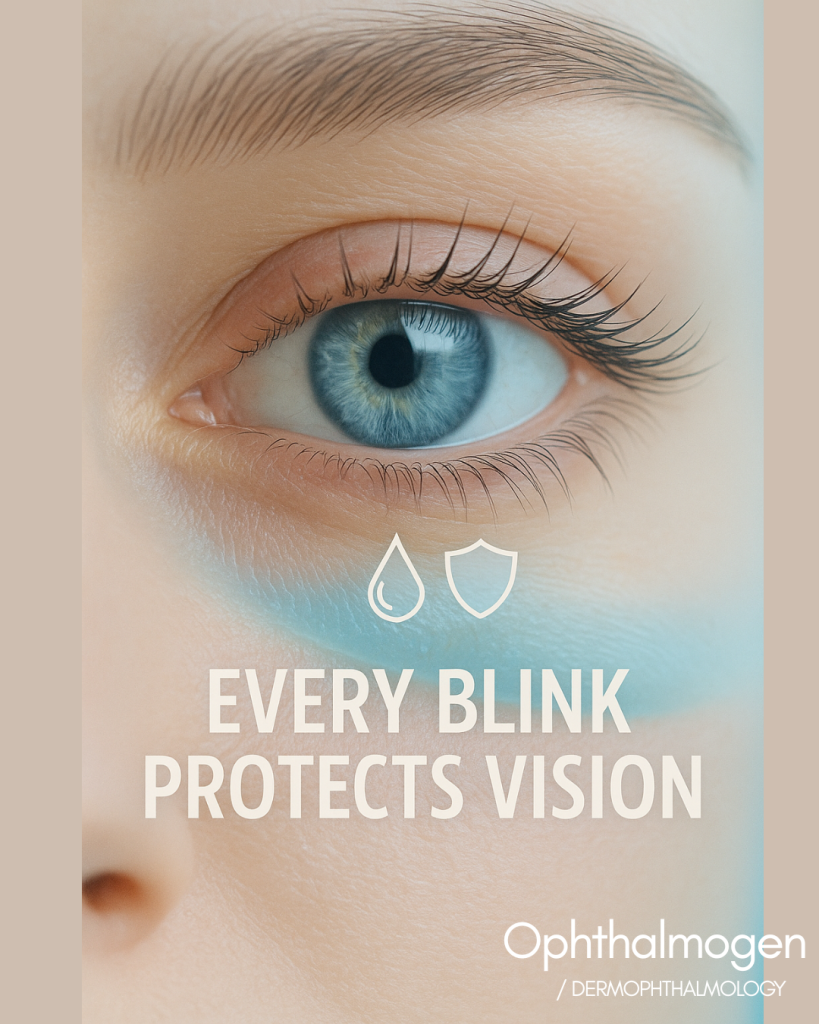
Lashes & Aesthetic Procedures
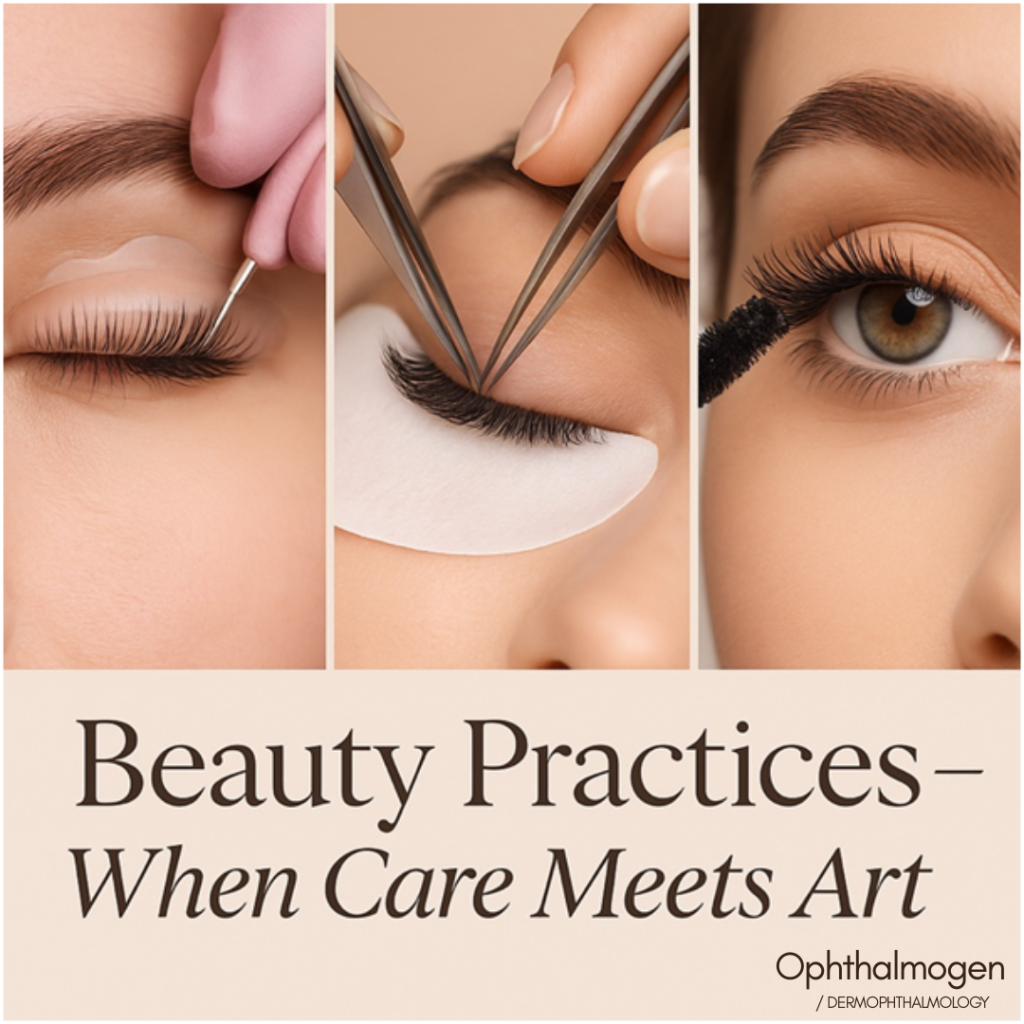
Lash Lift
- Chemical curling using ammonium thioglycolate.
- Sensitive for 48h (avoid heat/water).
- Afterwards: Ophthalmogen Eye10 (spa-like heat 40°C), Foam and Spray for cleansing & relief.
Extensions
- Glues containing cyanoacrylates → allergies, Demodex, blepharitis.
- Daily cleansing with Ophthalmogen Foam is essential.
Mascara & Makeup
- Residues clog Meibomian glands.
- Daily routine: Foam + Gel.
Dermophthalmology & Lashes
Dermophthalmology views the lashes as part of the Oculodermal Unit — the integrated system of eyelids, lashes, brows, and ocular surface.
- Massage: Ophthalmogen Gel
- Protection: Ophthalmogen Spray
- Restoration: Ophthalmogen Eye10
With this Eye Skincare Protocol, lashes become both healthy and beautiful.
Case Studies
- Female, 28 – Frequent lash lifts → developed dry eye. Spray restored comfort & improved makeup adherence.
- Male, 40 – Madarosis due to psoriasis → Ophthalmogen Gel improved lash hygiene and relief.
F&Q
- How long does an eyelash live?
3–5 months before naturally shedding and regrowing.
- Why do my eyes get red with extensions;
Often due to allergies, blepharitis, or altered air flow from modified lash length.
- Should I clean my lashes?
Yes — like your face. Lash hygiene is essential.
- How are lashes related to vision?
They regulate tear evaporation and protect the cornea.
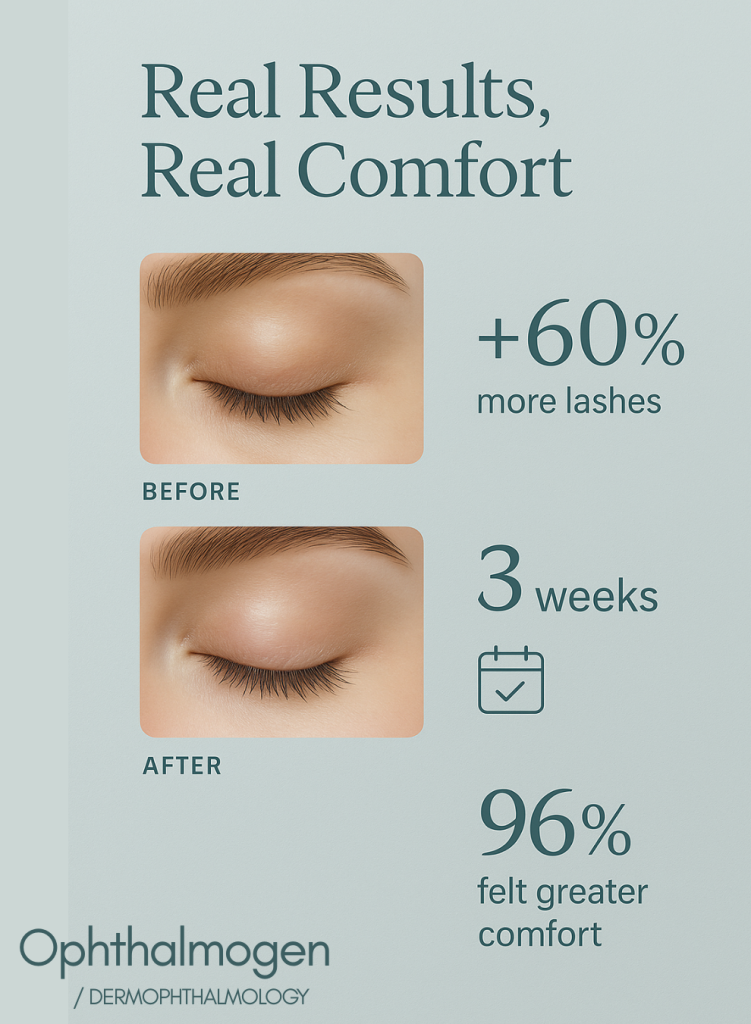
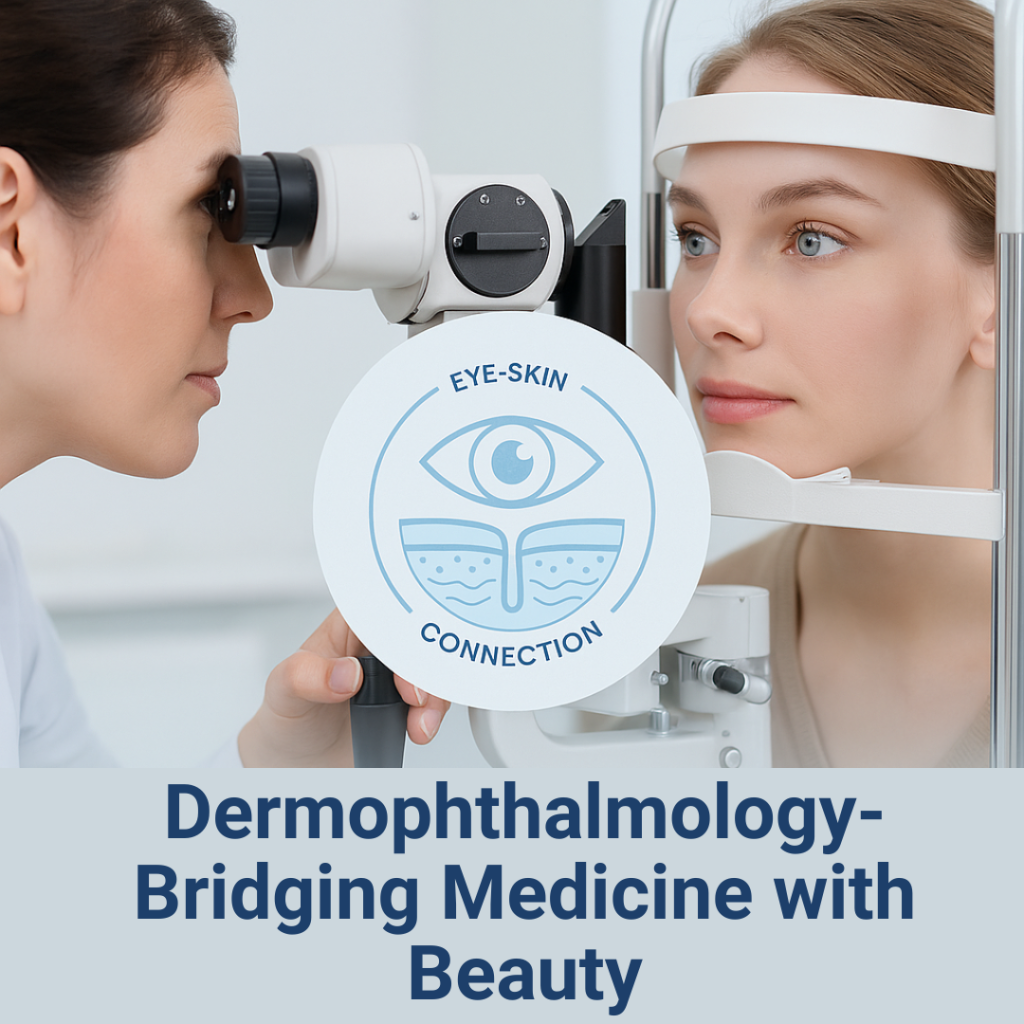
Dermophthalmology as a Branch of Ophthalmology
Dermophthalmology is a subspecialty of Ophthalmology,
- highlighting that lashes are not just aesthetic but functional organs.
- It does not replace aesthetics — it complements it.
- The ophthalmologist remains central: diagnosing conditions and collaborating with aestheticians and dermatologists.
Dermophthalmology is the bridge between Medicine and Beauty — born from Ophthalmology, working with Aesthetics, serving health, comfort, and beauty.
Conclusion
Lashes are simultaneously guardians, sensors, and ornaments of the eyes. From Hippocrates and Pliny to Hollywood and modern aesthetics, they remain at the core of human image and health.
Today, with Dermophthalmology, we can finally care for them both scientifically and beautifully — ensuring the gaze is always healthy, rested, and radiant.
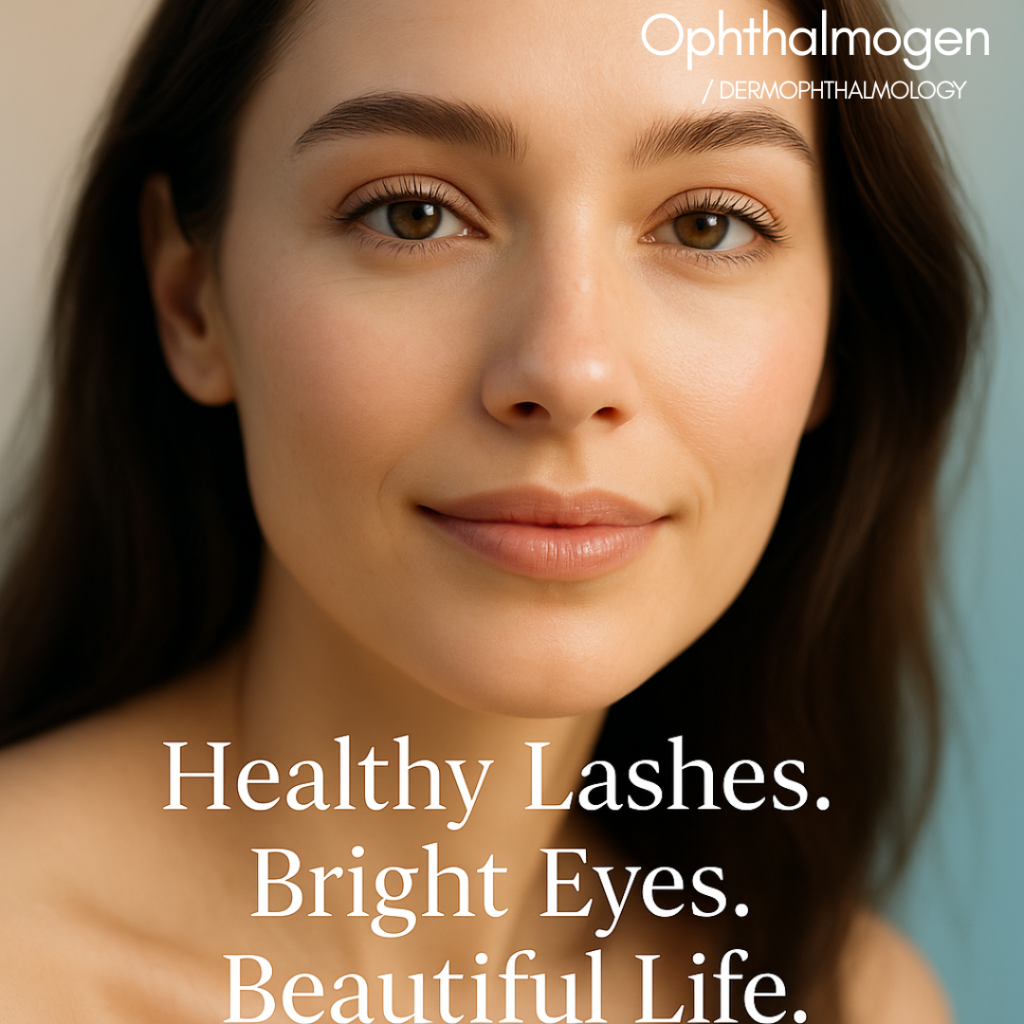
Discover the full Ophthalmogen range at www.ophthalmogen.com and Dermophthalmology at www.Dermophthalmology.com
Give your eyes the care and beauty they deserve.


